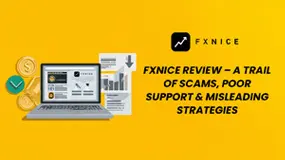简体中文
繁體中文
English
Pусский
日本語
ภาษาไทย
Tiếng Việt
Bahasa Indonesia
Español
हिन्दी
Filippiiniläinen
Français
Deutsch
Português
Türkçe
한국어
العربية
Exploring How Cover Rate Forex Helps You Hedge Against Potential Exchange Rate Fluctuations
Abstract:Exchange rates are constantly changing; they fluctuate based on trading volume, market sentiment, and several other factors. These fluctuations can raise concerns for you if they don’t turn out as expected. That’s why many like you are resorting to a cover rate forex strategy to hedge against currency fluctuations. Read on to learn more about it.

Exchange rates are constantly changing; they fluctuate based on trading volume, market sentiment, and several other factors. These fluctuations can raise concerns for you if they don‘t turn out as expected. That’s why many like you are resorting to a cover rate forex strategy.
Often associated with covered interest rate arbitrage, this strategy allows investors to borrow in a low-interest currency and convert it into a currency bearing high interest rates. Then follows the investment in that currency and a forward contract to get the original currency at a predetermined rate. This helps eliminate the exchange rate risk. Considering that it may sound complex, we prepared an useful guide on the cover rate forex phenomenon. Read on to understand the process.
Covered Interest Rate Parity and How It Protects You Against Forex Volatility
Covered Interest Rate Parity (CIRP) or cover rate forex is a popular forex concept where the difference in interest rates of two countries currencies should reflect in the forward exchange rate. It thus means that the whole process of borrowing a low-interest currency, converting it to a currency with higher interest rates, investing, and then using a forward contract to convert to the original currency should work in a way to eliminate the potential profit from fluctuations in exchange rates. The forward contract used in it helps cover or hedge the exchange rate risk.
Interest Rate Parity Condition Formula
The forward exchange rate is calculated using the formula below.
F = S x (1+id)/(1+if)
Where,
‘F’ stands for forward exchange rate.
‘S’ remains the existing spot exchange rate.
‘id’ is the domestic or base currencys interest rate.
‘if’ remains the quoted or foreign currencys interest rate.
Demonstrating Covered Interest Rate Parity with an Example
Example - You are contemplating a cover rate forex concept, keeping USD and GBP as two currencies. Assume that both of these US and UK-based currencies are trading at par. However, if the annual interest rate of the US is 8% and 4% in the UK, it would be better to borrow in GBP (the UK-based currency), convert it to USD in the spot market, and invest the amount in the US. However, to repay the loan in GBP, entering into a forward contract makes sense. With that, you can exchange USD for the former. Covered interest rate parity thus comes into the equation and helps eliminate the gains from the transaction.
As USD and GBP are trading at par, a unit of one currency is equivalent to another.
Forward price would thus be
1 x [(1+4%)/(1+8%)] = 0.96
How Different is Covered Interest Rate Parity from Uncovered Interest Rate Parity?
Yes, both these terms exist and have their own implications for forex investors. While covered interest parity covers the exchange rate using forward contracts, uncovered interest rate parity deals with rate forecasting and covering exposure associated with foreign exchange risks. The uncovered interest rate parity thus does not have forward rate contracts. Instead, it uses just the expected spot rate. If the forward and expected spot rates become equal, covered and uncovered interest rate parity will remain the same.
Conclusion
Understanding cover rate forex helps you make decisions that efficiently manage your risks. Its a powerful tool to protect your forex exposure against market volatility.
So next time you hear about forex fluctuations, use the cover rate forex strategy to cover your risks smartly.
Something New, Something Exciting, Something Rewarding for you!
Join the WikiFX Masterminds community to know whats in store for you!

Disclaimer:
The views in this article only represent the author's personal views, and do not constitute investment advice on this platform. This platform does not guarantee the accuracy, completeness and timeliness of the information in the article, and will not be liable for any loss caused by the use of or reliance on the information in the article.
Read more

Olymptrade Under Fire – Fraud Allegations and Investor Outrage
The message is loud and clear for Olymptrade - Get your act RIGHT or continue to face fraud allegations and investor outrage. With investor complaints refusing to stop, Olymptrade has all but lost trust and goodwill.

Busted! 5 Brokers Blacklisted by the FCA
The FCA (Financial Conduct Authority) warns people about unauthorised brokers—operating without a proper license. If a broker is unregistered, you have no legal protection or refunds if they take your money or fail to handle it properly. FCA has recently blacklisted.5 scam brokers. Checkout the List Below.

Is the Forex Bonus a Genuine Perk or Just a Gimmick?
Have you received a forex bonus offer from a broker? Wondering whether it is a pure marketing ploy to make you a client? Your doubt makes sense! Explore this story where we have uncovered details regarding forex deposit bonus, no deposit bonus, and other types.

FXnice Review – A Trail of Scams, Poor Support & Misleading Strategies
FXnice, surprisingly, is not proving nice for forex traders all over. Traders have been requesting the company officials to allow them to withdraw their funds. However, these officials provide them a false reason, i.e., unverified accounts for withdrawal denials. Inaccurate technical tools and incompetent analysts further add to the investors' woes. Dive into this much-awaited exposure story on FXnice.
WikiFX Broker
Latest News
Japan stocks jump over 3% as Trump announces trade deal; broader Asia markets also rise
European stocks set to rally at the open as U.S.-Japan trade deal boosts global market sentiment
CySEC Flags Two Unlicensed Investment Platforms: greymax.net and finotivefunding.com
Shares of department store Kohl's surge 30% in wild trading
Just be yourself' is bad advice, says expert—here's what successful people do instead
Opendoor shares are surging again as hyped real estate stock leads meme rally revival
WikiFX Report: Five Forex Brokers with No Spread
MFSA Warns of Digital Market Mining Scam: Alchemy Markets Clone
Alchemy Markets Launches Seamless TradingView Integration
EC Markets Expands with New Office in Mauritius
Currency Calculator


